
[089] Columba livia, Pigeon
Introduction
Columba livia, the Rock Dove, Domestic Pigeon or Feral Pigeon, can to be considered as three types of birds but I will generally just call them all Pigeons.
The Rock Dove is a type of pigeon generally found in cliffs and rocky places. It is also known as a Rock Pigeon or Common Pigeon or, informally, as a Pigeon.
The Domestic Pigeon is a domestic version of the Rock Dove, possibly a subspecies, a widely domesticated bird with several uses. There are about a thousand recognized breeds.
The wild Pigeon or Feral Pigeon has come from escaped Domestic Pigeons. They may be called City Doves, City Pigeons or Street Pigeons but I will call them just Pigeons. They are not feral (although their ancestors may have been several dozen generations ago.)
Taxonomy
Kingdom – Animals
Phylum – Chordates
Class – Aves (Birds)
Order – Columbiformes (One family)
Family – Columbidae (Doves and Pigeons)
Subfamily – Columbinae
Tribe – Columbini
Genus – Columba
Scientific Name – Columba livia
Name
Pigeon is a French word coming from the Latin onomatopoeic pipio. Dove is from German origins cognate with dive.
Columba is the Latin for dove, coming from Ancient Greek kolumbos meaning a diver. Livia comes from the Latin livor, meaning bluish.
Columbidae
There are about 350 species in this family and many of them are called pigeons or doves. There is a tendency for smaller ones to be called doves and larger ones, pigeons but the two word are almost interchangeable. They are adaptable and are found in many habitats worldwide.
Rock Doves
The appearance of a Rock Dove is typical of doves. Its body is light grey with two dark wing bars. The head, neck and the top of its back are a darker bluish grey, with a glossy purple and green iridescence on its front.

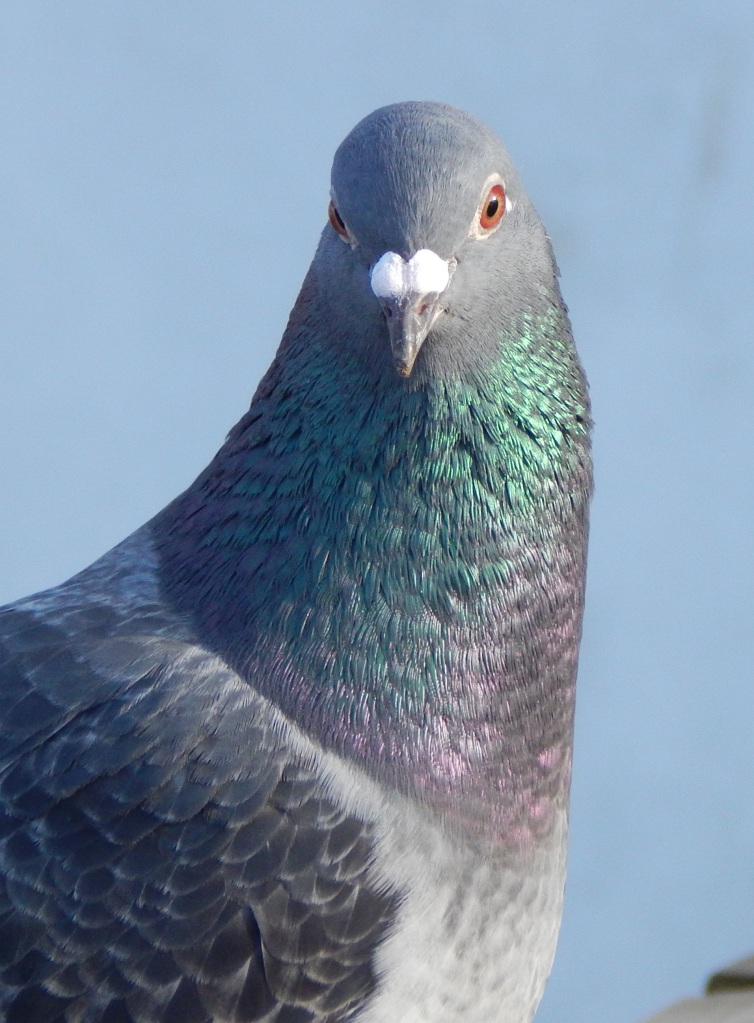
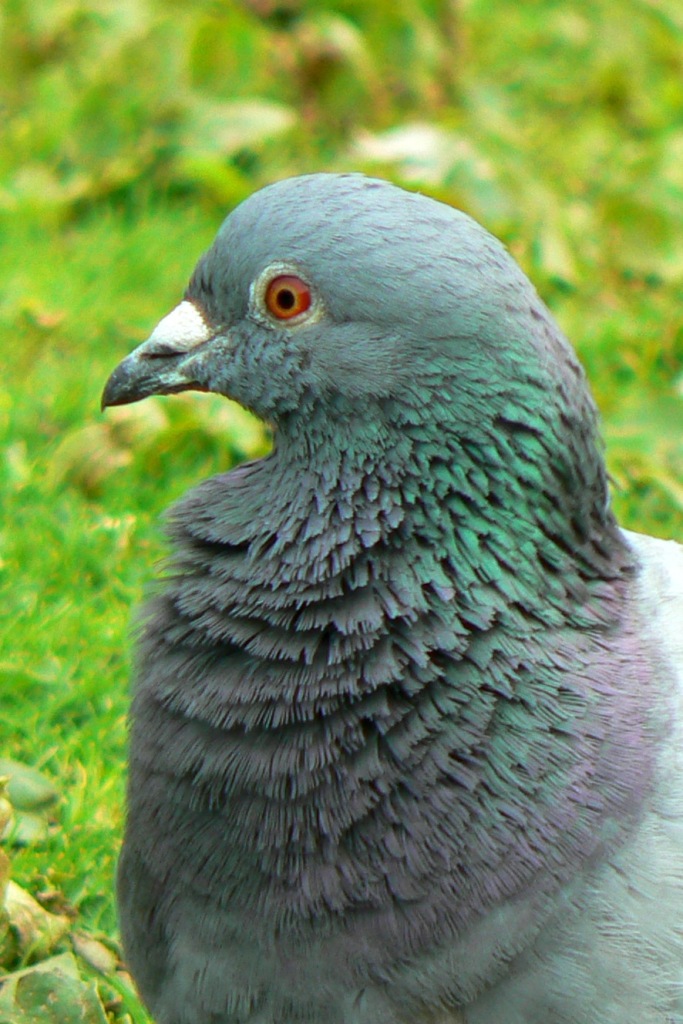
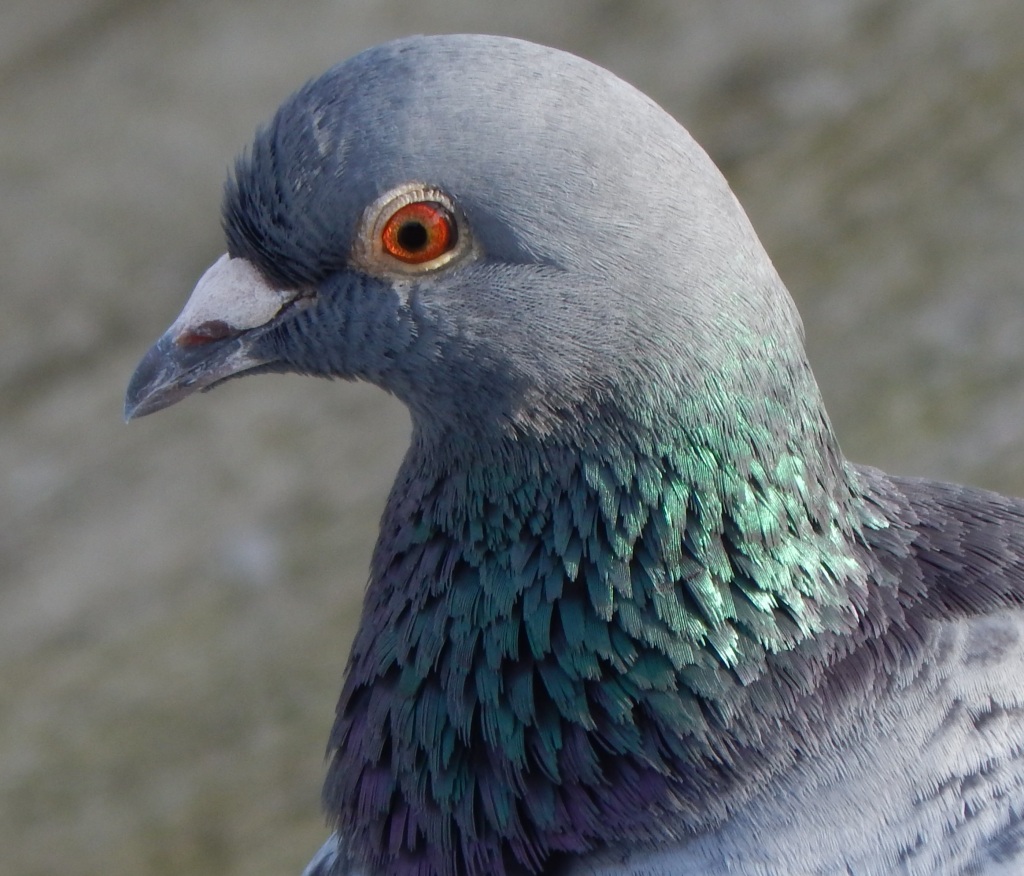
The bill has a conspicuous off-white cere.
Its original native range is relatively limited – Southern Europe, Northern Africa and Parts of west Asia. They generally nest in wild rocky locations and are still found on cliffs.
Domesticated Pigeons
Pigeons have been domesticated for perhaps ten thousand years and are sometimes designated as a subspecies, Columba livia domestica. They are mentioned in Mesopotamian cuneiform and Egyptian heiroglyphics.
They have been used as carrier pigeons to convey messages and are now used as pets, as show birds or in the sport of homing pigeons. Homing pigeons are able to find their way home easily when released up to a thousand miles away.
They are bred either specifically as homing pigeons or as show birds in about a thousand breeds recognized worldwide. Some breeds just have different colouration but others come in some more unusual shapes.
Some breeds are kept specifically for food.
‘Feral’ Pigeons
Over the centuries, many birds have either escaped or been released into the wild and this population has been successful and has grown and spread. They are found almost throughout the World, at least where there are people.
They show a variety of plumages, although many birds look wholly or partly like the original Rock Dove.
Recently escaped birds or active homing birds are usually ringed to record their ownership.
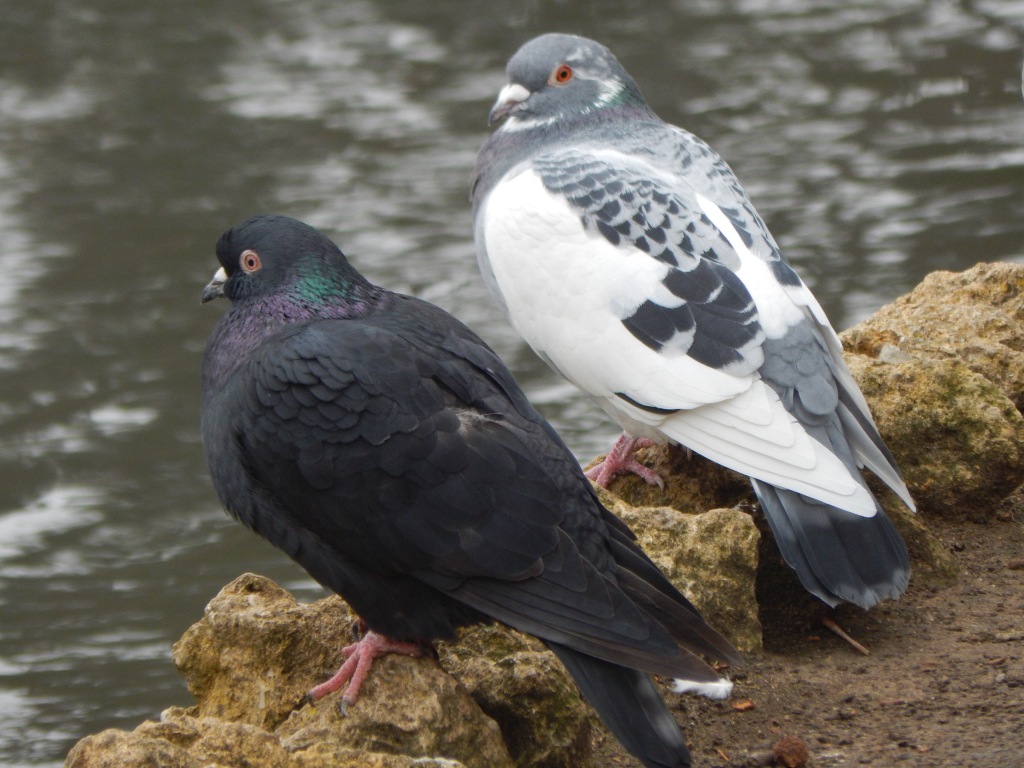


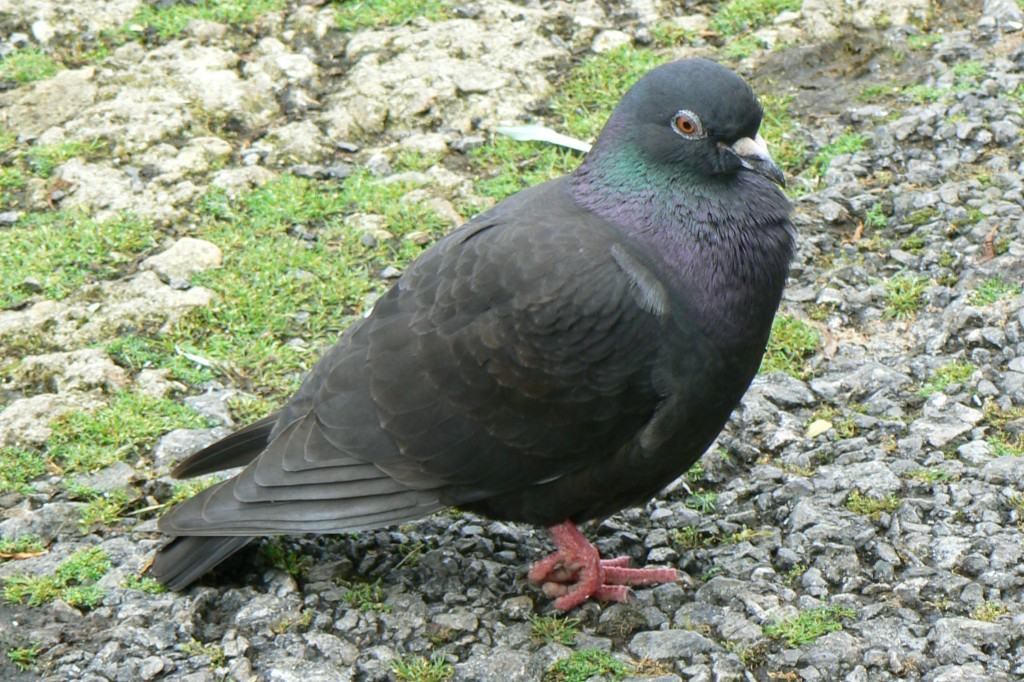

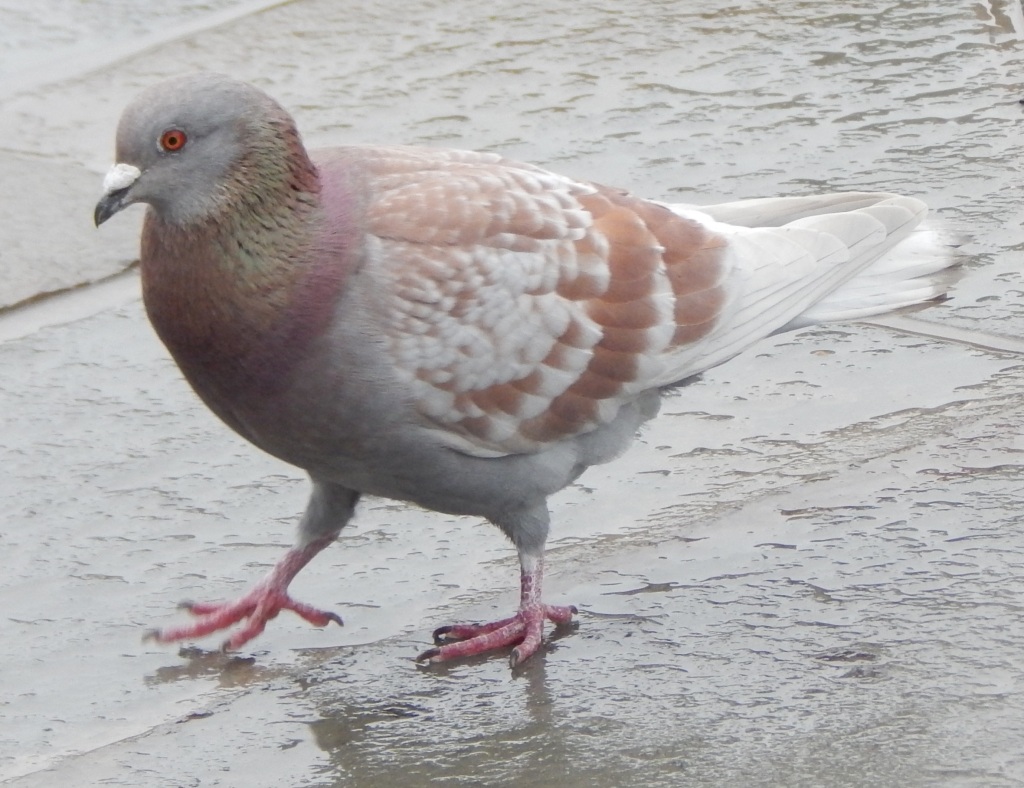
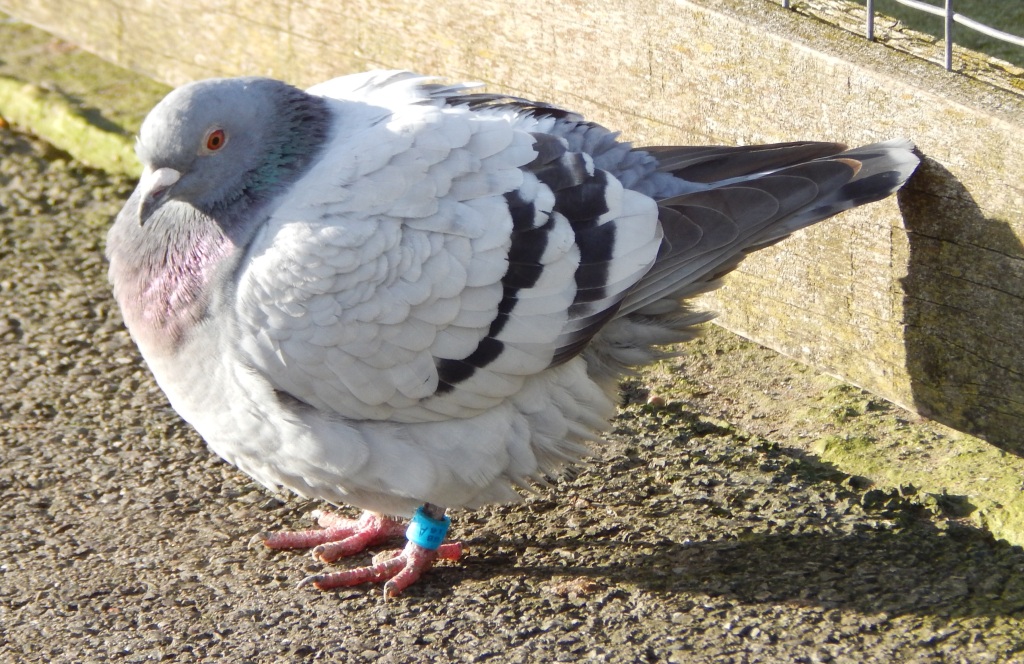
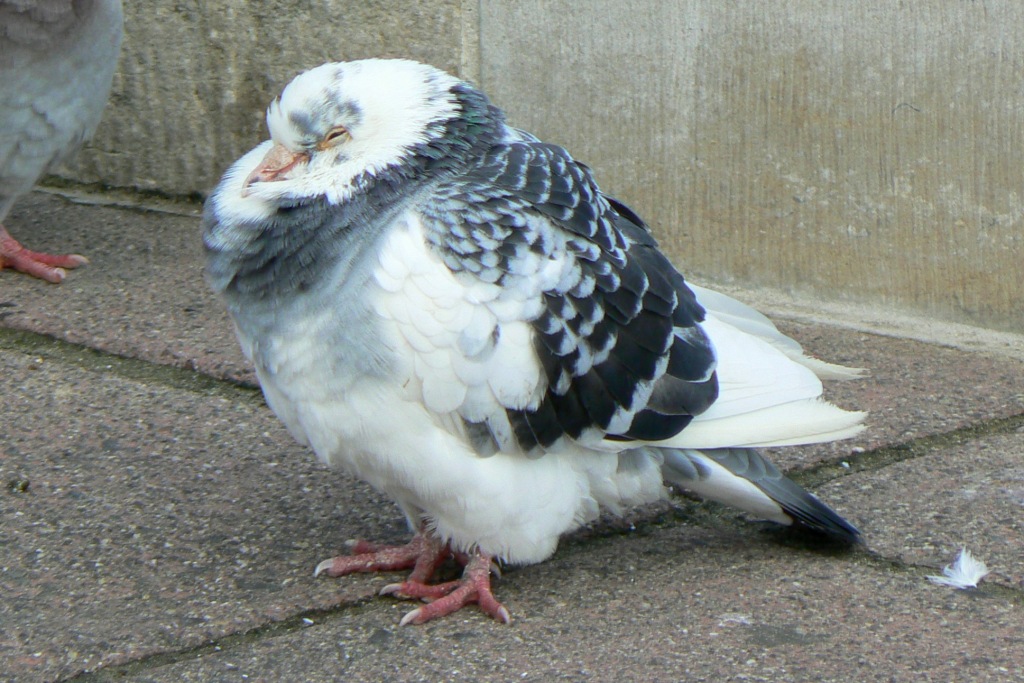

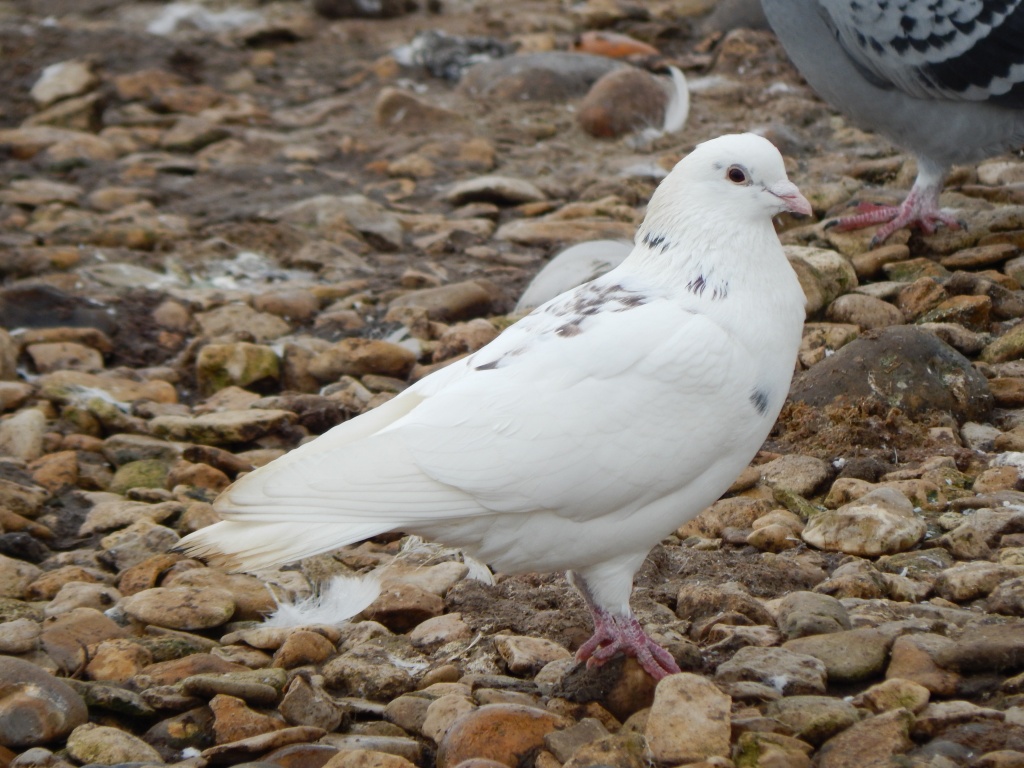

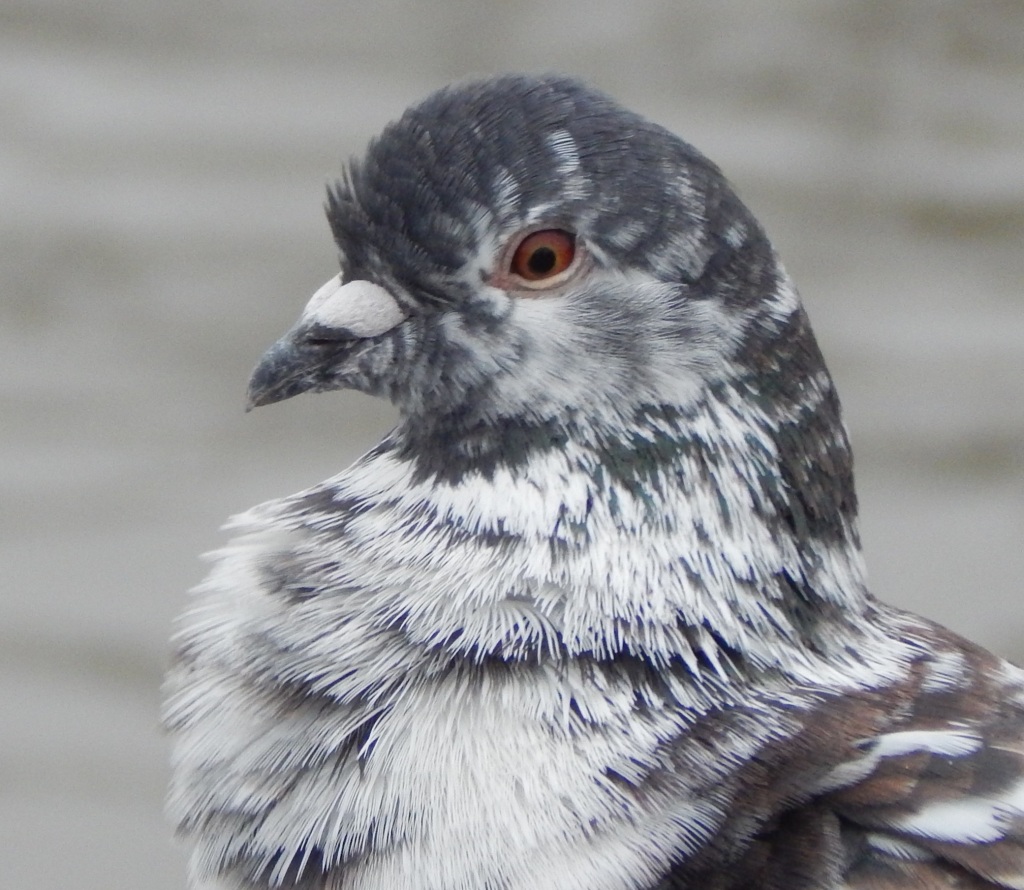
Albino Pigeons
As for many animals, there are albino (or leucistic) versions with completely white plumage. Sometimes groups of kept pigeons are all albino and occasionally single birds (or pairs) are seen in the wild.

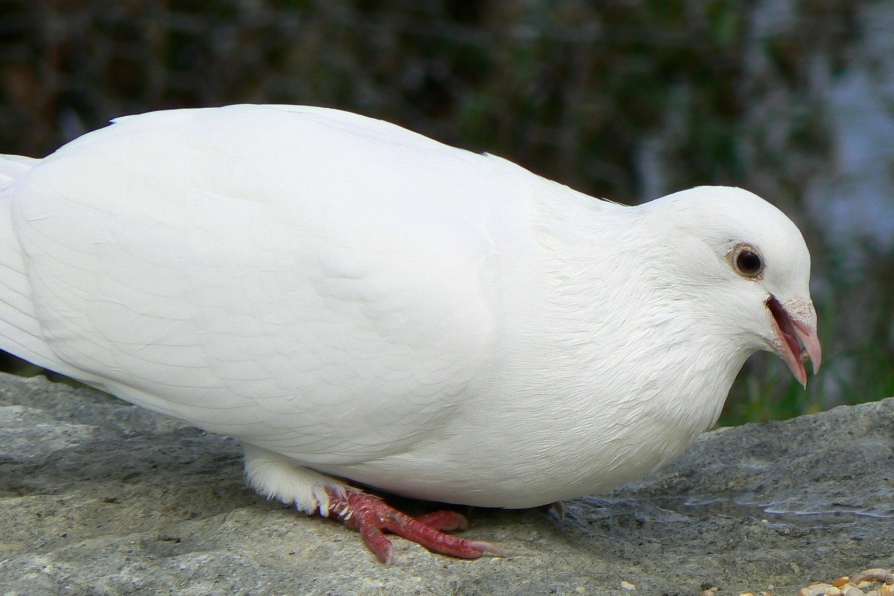
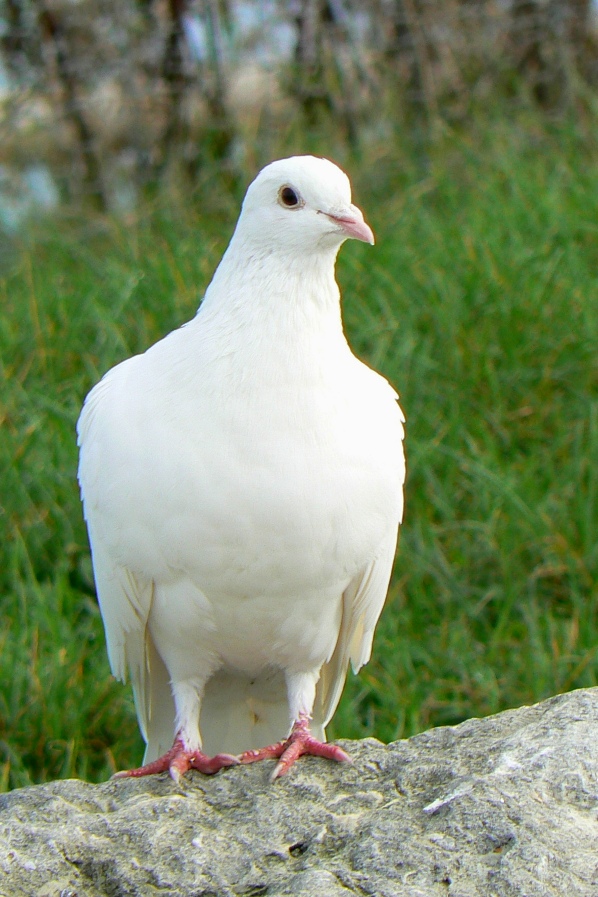
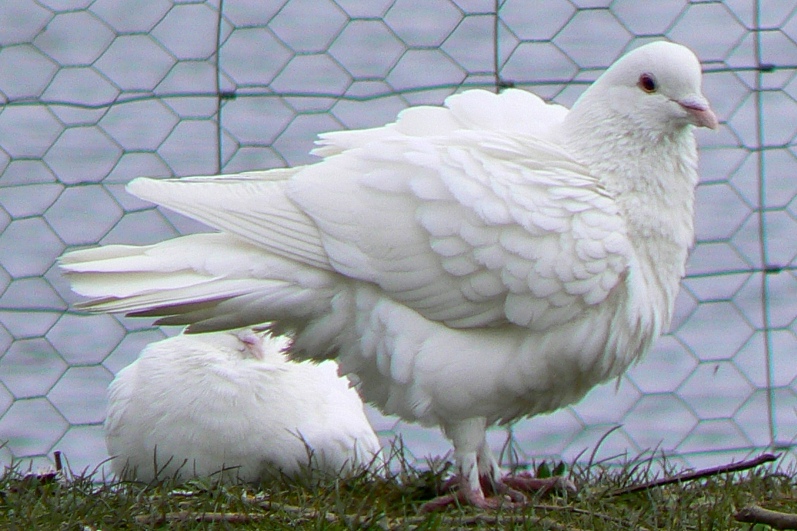

Habitat
Pigeons still like locations that resemble the rocks and cliffs of their origins. They like roof tops, walls, underneath bridges, and inside large open buildings like train stations. This can make them common prey of the Peregrine (Falcon.)
They are gregarious and appear in parks and towns wherever they are regularly fed. They are not usually seen in domestic gardens
Other Notes
I very often see a group of pigeons flying round in a small circle. They seem to do this twice a day at fixed times. It is presumably an exercise ritual. I don’t know whether it organised by the birds or by their owners.
See also
Our most common doves are the Pigeon and the Woodpigeon, which is coming tomorrow.
The Turtle Dove, immortalised in The Twelve Days of Christmas, is now almost extinct as a summer visitor.
See also [326] the Collared Dove.
